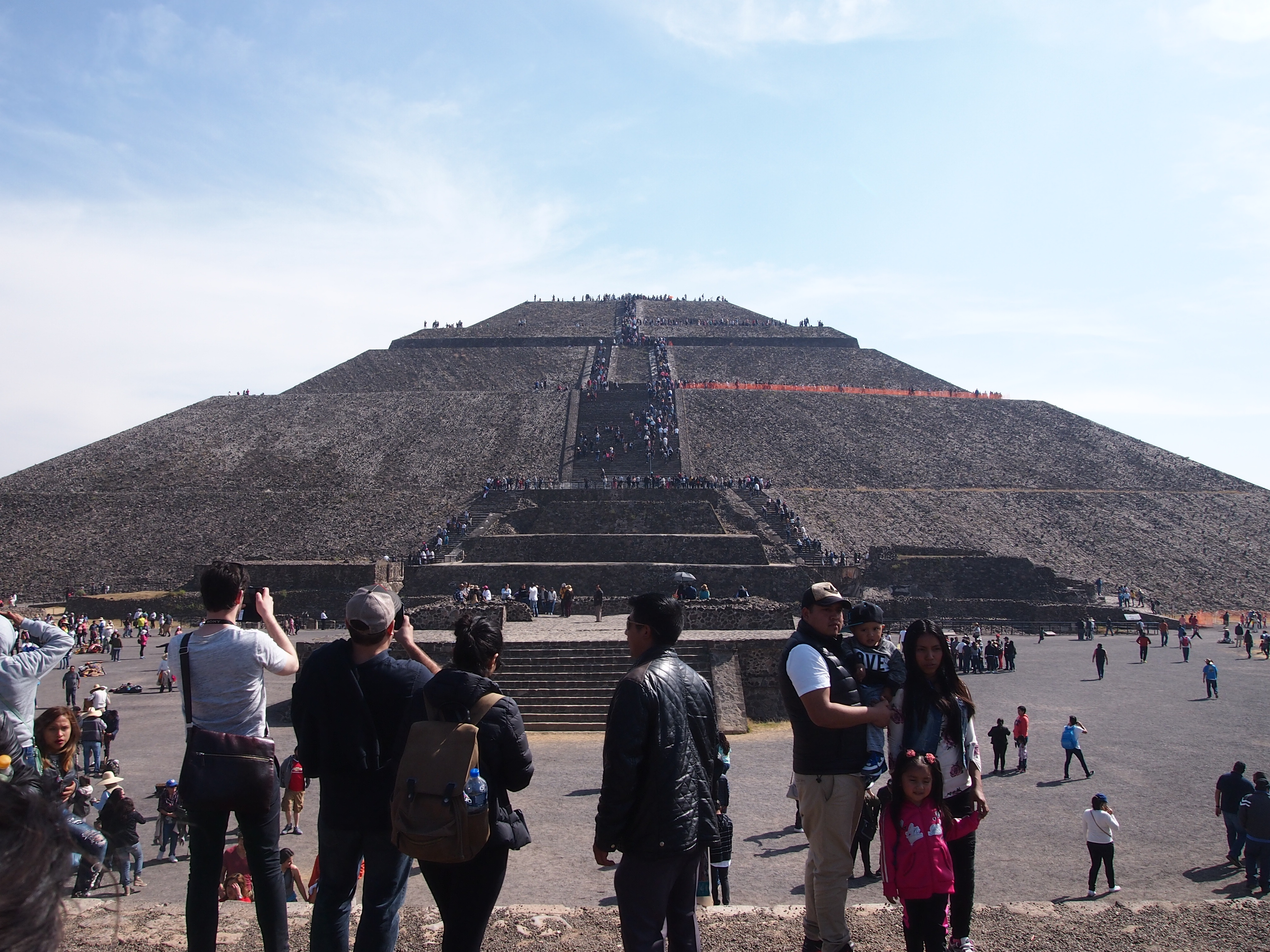During our six days in Mexico City, we ventured out of the city only once, traveling 25 miles or so northeast on December 30, into the State of Mexico, to see Teotihuacan. To see las pirámides there: the Pyramid of the Feathered Serpent; the Pyramid of the Moon; and the Pyramid of the Sun, hard to beat for sheer rise-to-the-sky bulk.
The rest of the time in Mexico, we walked or took the subway to our destinations. For Teotihuacan, we hired a car and a driver, who doubled as a guide: a bilingual gentleman name Leonardo, a lifelong resident of Mexico City in his 60s (probably) and exceptionally knowledegable about las pirámides de Teotihuacan, and a good many other things. He had, I believe, escorted many a gringo to see Teotihuacan over the years.
The ride out of Mexico City had its own interests: the miles and miles of city visible from the highway, seemingly endless painted cinder block and colored stucco filling every spot until the terrain is too steep; the graffiti on the highway walls or, as it seemed sometimes, the painted words that represented a cheap way to announce or advertise something; the many Pemex stations; the brown brush and tired-looking trees; and distant mountain peaks always in the background.
Leonardo’s lived long enough to see the Valley of Mexico fill with greater Ciudad de Mexico. Fewer than 3 million people lived there in 1950; now more than 20 million do. As in many parts of the world, the inhabitants of the furthest reaches of the country came looking for work, waves and waves of them, and built their own improvised neighborhoods. Leonardo also said that he remembered the ’68 Olympics as an exciting time to be a young man in Mexico City.
It occurred to me only afterward — only after I’d returned from Mexico, really — that I’d never seen a pyramid with my own eyes before, unless you count the likes of the Luxor Hotel & Casino in Las Vegas. Actual ancient structures, no. An odd thing to realize.
Or maybe not. We’ve all seen so many images of them, whether in Egypt or Mexico or elsewhere, in movies and TV and magazines and books and artwork and travel literature and posters and so on. Second-hand experience, that simulation of the real thing, is not always a bad thing, but is infectious and can blur first-hand experience.
Now I do my little bit to spread second-hand experience. No matter.
The first place we visited at the site was the smallest of the major structures, the Pyramid of the Feathered Serpent, a Mesoamerican name if there ever was one. It was a short climb up uneven stone steps, a preparation for that much larger pyramids to scale later.
In archaeological terms, the Feathered Serpent is where a lot of the recent action has been. “In 2003, a tunnel was discovered beneath the Feathered Serpent pyramid in the ruins of Teotihuacan, the ancient city in Mexico,” reported to the Guardian. “Undisturbed for 1,800 years, the sealed-off passage was found to contain thousands of extraordinary treasures lying exactly where they had first been placed as ritual offerings to the gods.
“Items unearthed included greenstone crocodile teeth, crystals shaped into eyes, and sculptures of jaguars ready to pounce. Even more remarkable was a miniature mountainous landscape, 17 metres underground, with tiny pools of liquid mercury representing lakes. The walls of the tunnel were found to have been carefully impregnated with powdered pyrite, or fool’s gold, to give the effect in firelight of standing under a galaxy of stars.”
We didn’t see any of that, of course. But even if it was standalone ruin, Feathered Serpent would be a fairly impressive pile of stones. Many of the artifacts discussed above, incidentally, are now on display at the de Young Museum in San Francisco.
Soon we took a look at some of the excavations near the larger Pyramid of the Moon.
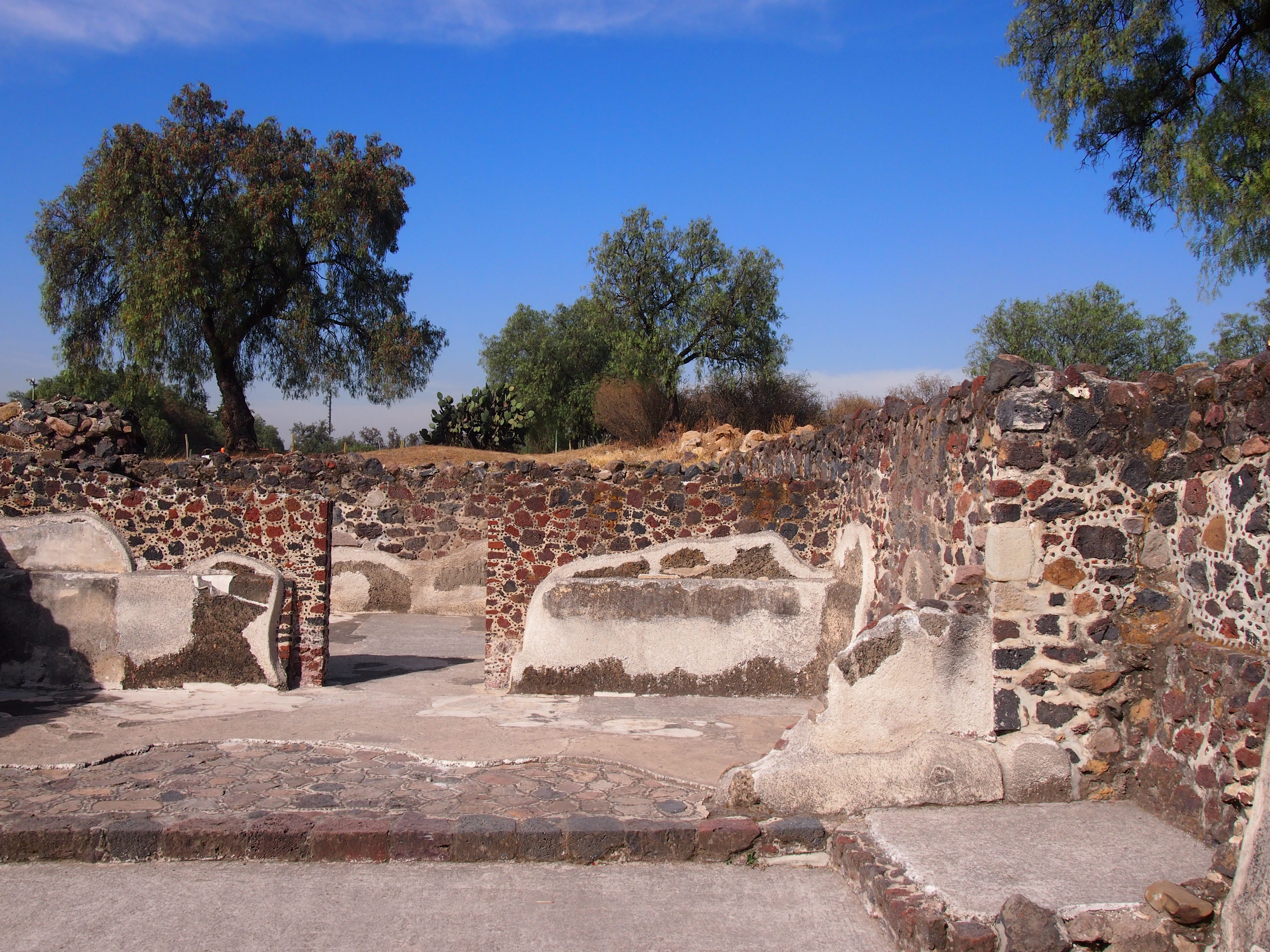 Then on to the Pyramid of the Moon itself. Here it is, seen from near its base.
Then on to the Pyramid of the Moon itself. Here it is, seen from near its base.
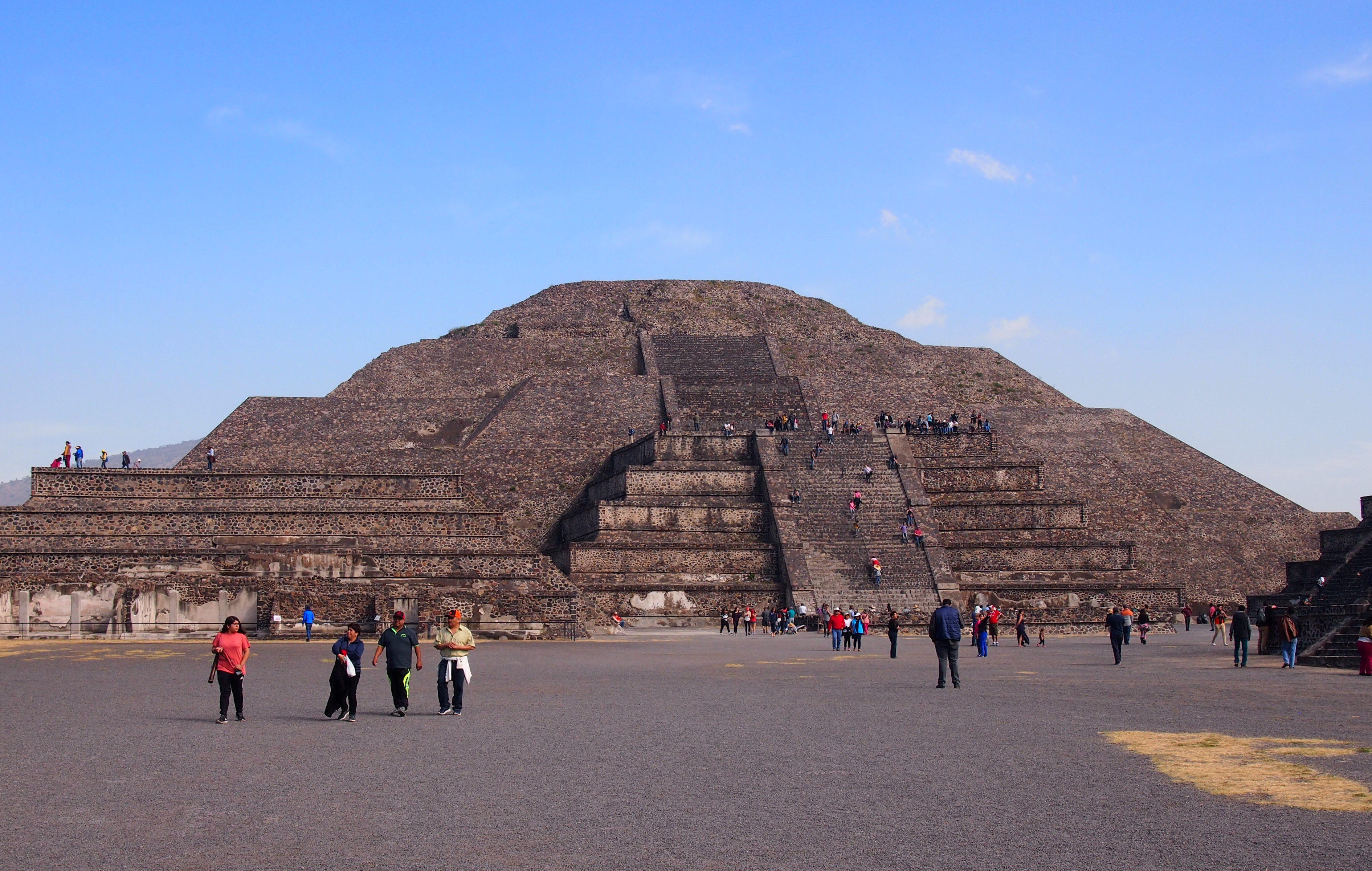 I stood and stared a while. If I hadn’t, I’d have had no business being there. Pretty soon, though, you feel like climbing the thing. You’re only allowed to climb about three-quarters of the way up, however. The upper level beyond that looks a little dicey.
I stood and stared a while. If I hadn’t, I’d have had no business being there. Pretty soon, though, you feel like climbing the thing. You’re only allowed to climb about three-quarters of the way up, however. The upper level beyond that looks a little dicey.
The structure is unexpectedly complex. Science Daily reported in 1999 that “the inhabitants of Teotihuacan built successively larger pyramids on top of the previous monuments, often partially deconstructing the previous pyramid in the process.
“From past research, there were thought to have been five phases to the Pyramid of the Moon, with phase one (dated in the 1st Century A.D.) being Teotihuacan’s oldest major monument. Excavations show a major jump in size and complexity occurring with the construction of pyramid four and a change in orientation that puts it in line with the unique and precise city grid structure that we see today in the city’s eight square miles of ruins.”
From the perch on the Pyramid of the Moon, you look down on the broad path known as the Avenue of the Dead.
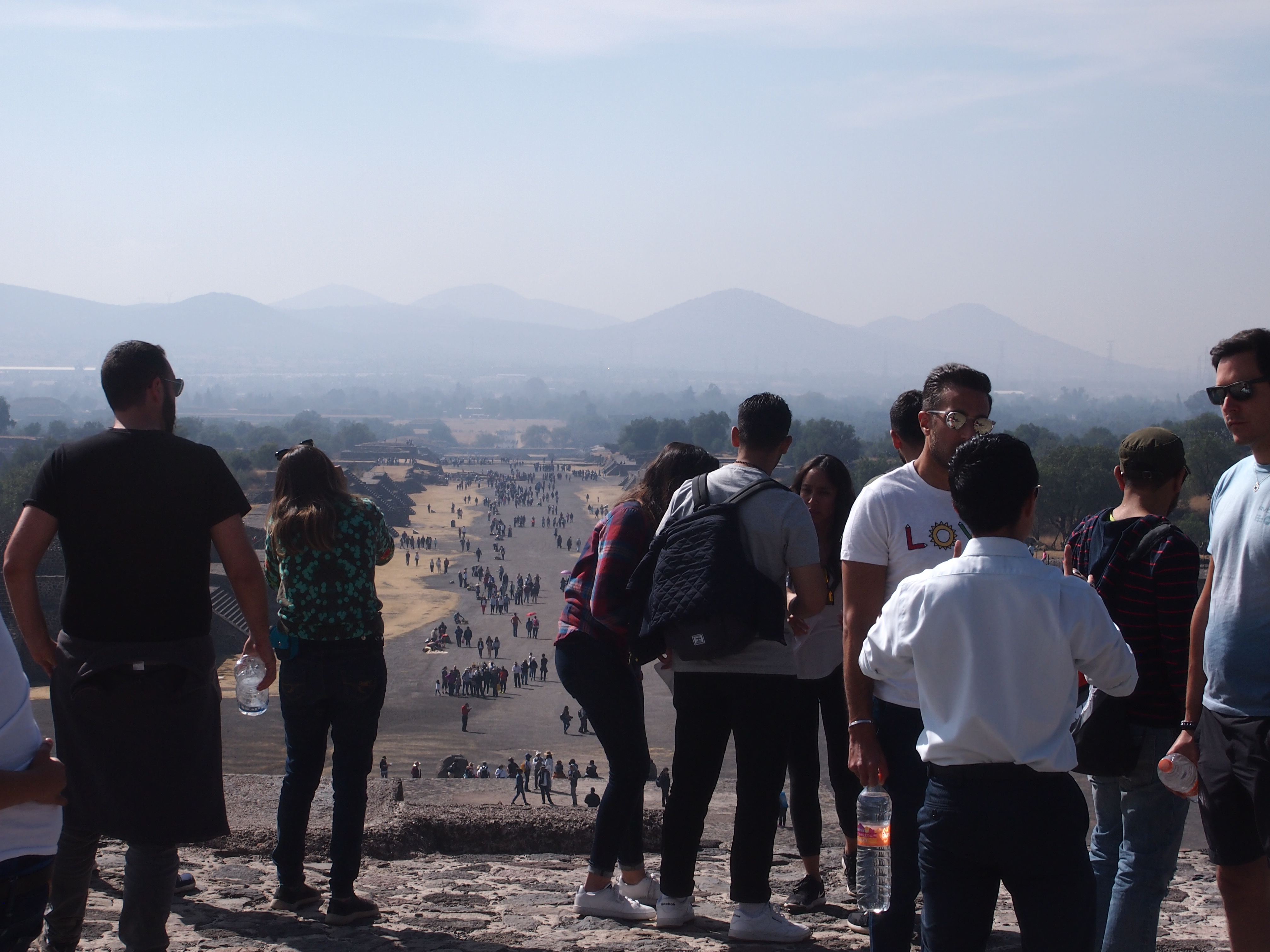 Beyond that, the mountains nearby are clear — or rather, they’re in the haze. But more striking is the mammoth Pyramid of the Sun, to the left of the Avenue of the Dead as seen from the Pyramid of the Moon. Remarkably, the outline of the Pyramid of the Sun looks a lot like the even more massive mountain Cerro Gordo behind it. No coincidence, I figure.
Beyond that, the mountains nearby are clear — or rather, they’re in the haze. But more striking is the mammoth Pyramid of the Sun, to the left of the Avenue of the Dead as seen from the Pyramid of the Moon. Remarkably, the outline of the Pyramid of the Sun looks a lot like the even more massive mountain Cerro Gordo behind it. No coincidence, I figure.
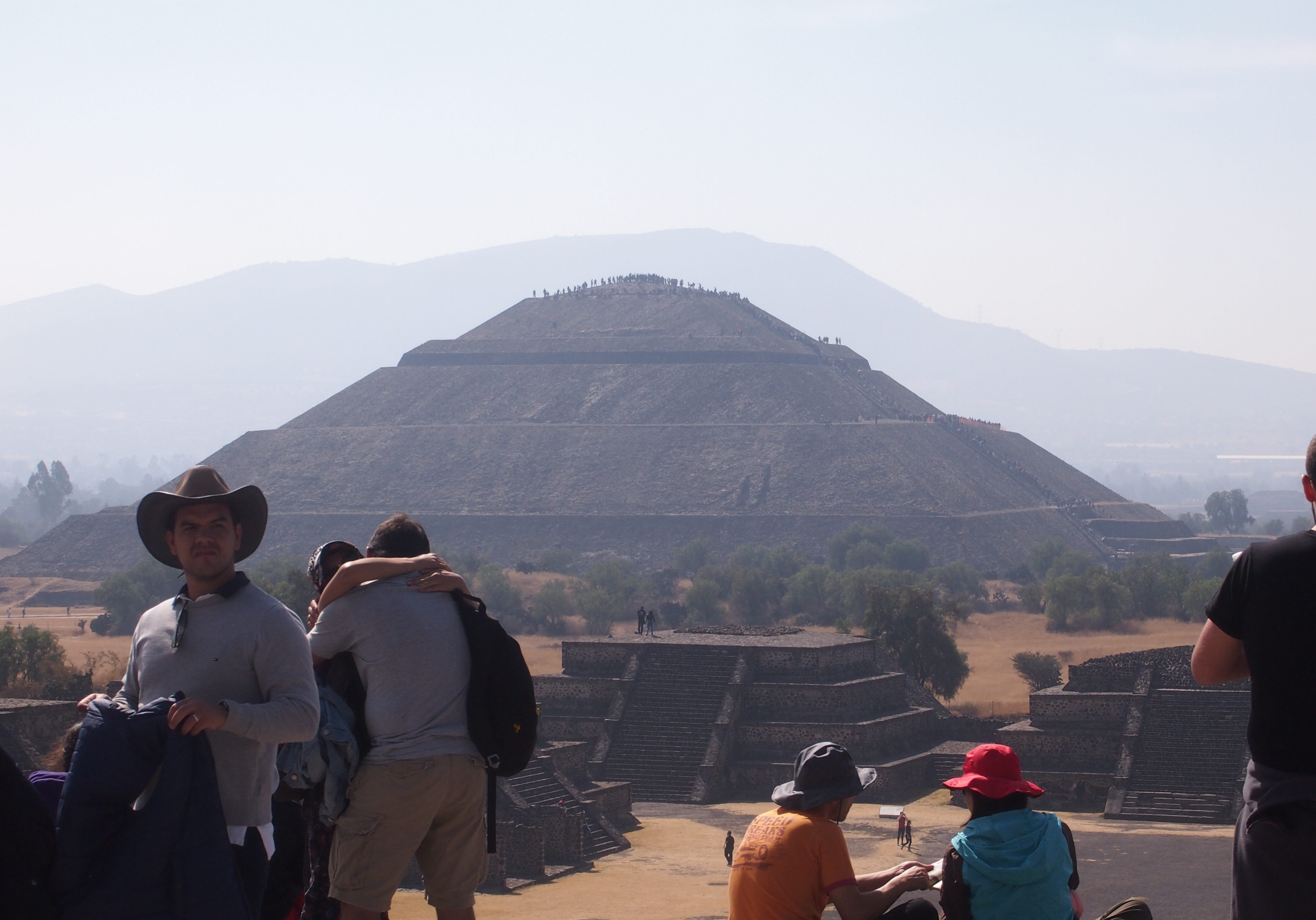 Afterward we walked back down to the Avenue of the Dead, because who wouldn’t want to miss a chance to walk on such a thoroughfare?
Afterward we walked back down to the Avenue of the Dead, because who wouldn’t want to miss a chance to walk on such a thoroughfare?
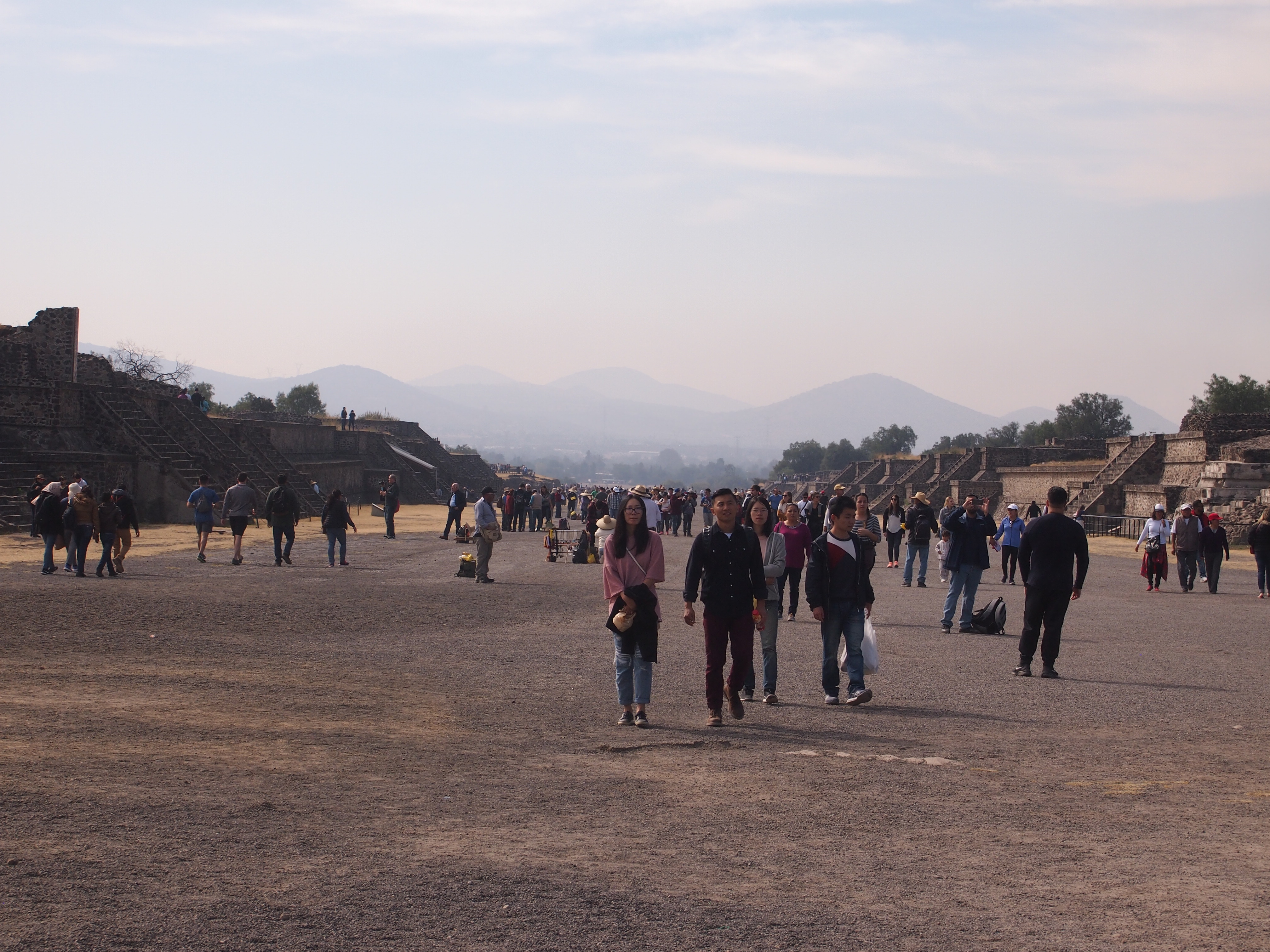 Pretty lively with living tourists. It’s pleasing to imagine that the shades of the unknowable people who built these impressive structures sometimes take strolls on the avenue, too.
Pretty lively with living tourists. It’s pleasing to imagine that the shades of the unknowable people who built these impressive structures sometimes take strolls on the avenue, too.
The Pyramid of the Sun looms over the landscape like no other part of Teotihuacan. To save a trip to Wikipedia, the structure is 216 feet high and is considered the third largest ancient pyramid in the world (the likes of the Vegas Luxor are thus out). The Great Pyramid of Cholula, only down in Puebla, is considered the largest, though it looks like a hill in our time; and the Pyrimid of Giza is second.
The Pyramid of the Sun also seems to attract climbers more than anywhere else. Note the orange line part way up. That’s crowd control, in the form of orange netting that marks a queue to get to the next level of the pyramid.
Tom and Lilly went on the to top. Considering my weight and age, and the fairly hot sun, I decided to wait for them at the level of the orange netting, so that’s as high as I got. Just another thing I should have done 20 — or 30 — years ago.
Even so, the view back at the Pyramid of the Moon from that level was one of my favorites at Teotihuacan and, in fact, of the entire trip.
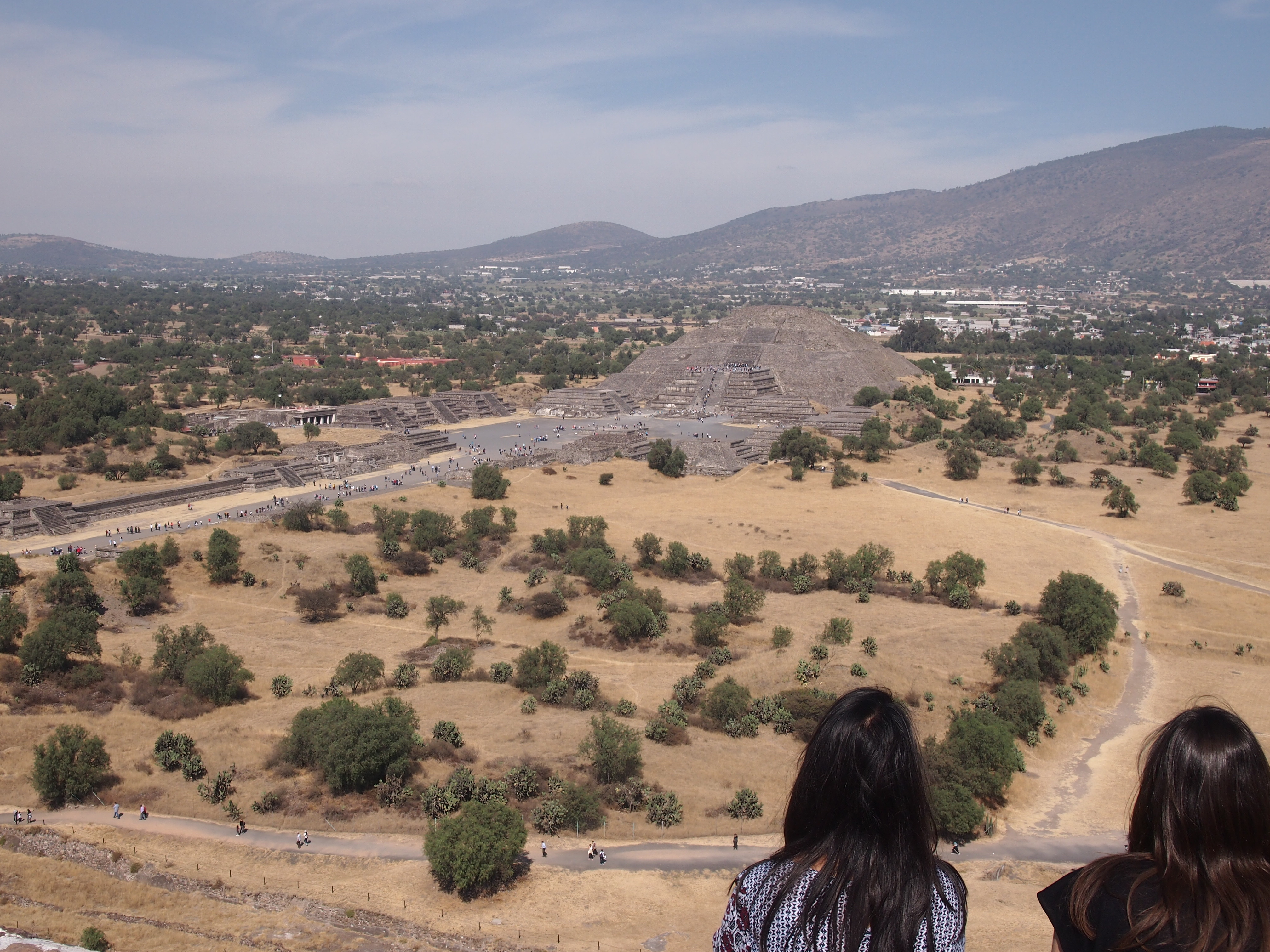 A postscript to our visit: A few days after we returned home, I happened across an episode of Ancient Aliens on the History Channel. Or rather, the “History” Channel. It isn’t a channel I watch much. But I was passing by and I noticed a familiar image. An aerial layout that looked like — Teotihuacan.
A postscript to our visit: A few days after we returned home, I happened across an episode of Ancient Aliens on the History Channel. Or rather, the “History” Channel. It isn’t a channel I watch much. But I was passing by and I noticed a familiar image. An aerial layout that looked like — Teotihuacan.
I stayed with it to confirm that the fellow was blathering about Teotihuacan. He was. The IMDb entry about the show (which is in its 12th season) pretty much sums it up: “The many structures that still stand in Teotihuacan appear to be encoded with advanced mathematical and cosmic principles, and the layout precisely mirrors the positions of the planets in our solar system.”
Does it, now? Clearly, I’ve been wrong about certain things for many years. Especially that interest in ancient aliens somehow faded away with the 1970s. Maybe that was merely the golden age of such notions, and they aren’t gone at all.
No one knows which people built Teotihuacan in the early centuries of the first millennium or what their motives were or why they left. Why is that hard to accept? The idea that ancient aliens had a hand in its construction is an insult to whomever the real builders were. Or to any ancient human beings who built extraordinary structures.
